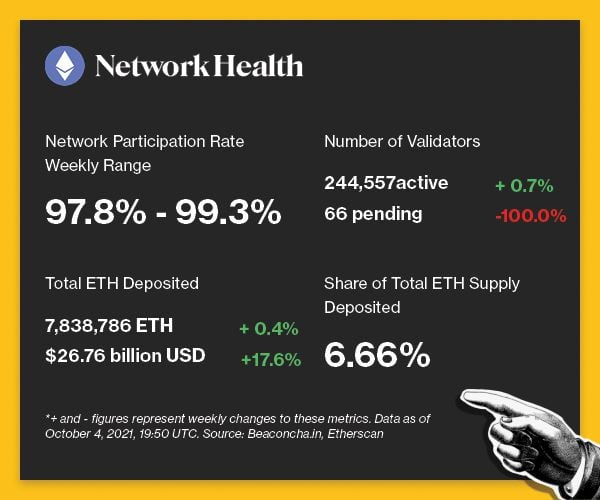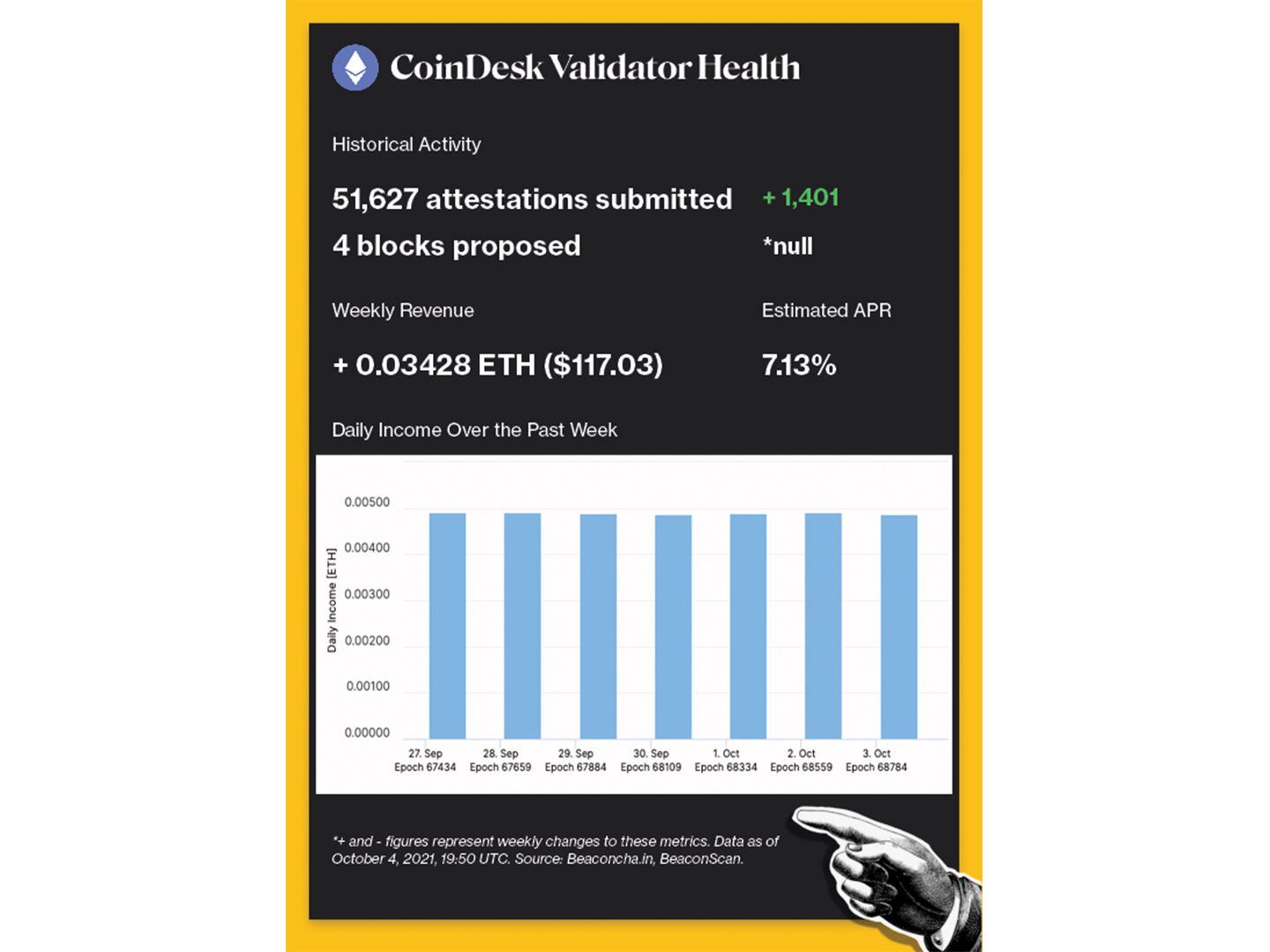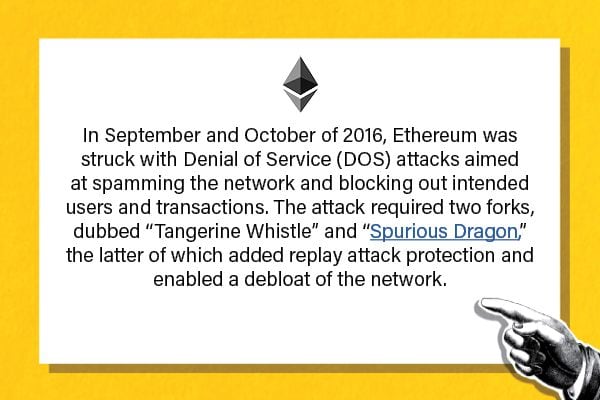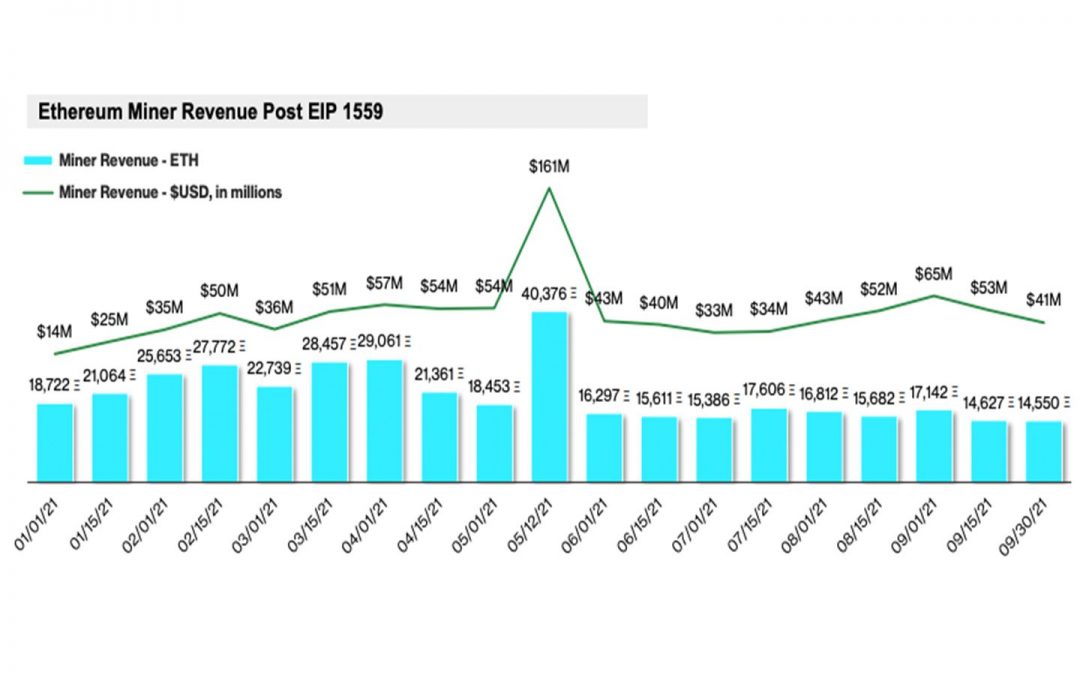This article originally appeared in Valid Points, CoinDesk’s weekly newsletter breaking down Ethereum 2.0 and its sweeping impact on crypto markets. Subscribe to Valid Points here.
October marks the beginning of the fourth quarter and perhaps an end to the crypto market’s fifth annual September Dump.
More importantly, we are excited to announce the release of CoinDesk Research’s Q3 Quarterly Review, containing data-driven analysis on Bitcoin, Ethereum, DeFi and NFTs.
While digging through the aftermath of EIP 1559, I realized that the upgrade was more multifaceted than I once understood. CoinDesk columnist Nic Carter had pointed out that EIP 1559′s design changes are “inherently political’ and that they pit blockscape consumers, token holders and miners against each other. While this could be true on a case-by-case basis, I don’t believe it captures the overall sentiment of any class of Ethereum stakeholders.
Why? The changes to the fee market and the addition of a burn mechanism have wider effects on all aspects of the user experience than what appears just on the surface. Furthermore, it is likely too early for any single participant to know how the upgrade will affect them in the long run. For example, CoinMetric’s data shows us that while miners may have lost out on a majority of transaction fees, profitability in USD has remained roughly the same.
Can the newfound scarcity narrative have a long-term positive impact on the price of ether? Should miners be upset if they generate similar revenue through block rewards alone? Again, I believe it is too early to assert any final takeaways from the upgrade, which I am most likely guilty of doing myself.
If you are interested in further analysis around EIP 1559, MEV, DeFi and more (like Bitcoin), take a look through our Quarterly Review.
Pulse check
The following is an overview of network activity on the Ethereum 2.0 Beacon Chain over the past week. For more information about the metrics featured in this section, check out our 101 explainer on Eth 2.0 metrics.


Disclaimer: All profits made from CoinDesk’s Eth 2.0 staking venture will be donated to a charity of the company’s choosing once transfers are enabled on the network.
Validated takes
- Compound’s founder, Robert Leshner, calls into question the ethos of decentralized finance (DeFi) after an $80 million dollar bug. BACKGROUND: A bug in Compound’s smart contracts allowed certain users to claim massive COMP rewards. Leshner briefly threatened to turn the receiving addresses over to the IRS, only to revoke the statement after strong backlash from the community. The incidental bug provoked questions on how the DeFi industry should be governed, if not by law.
- AXS peaked at $155 after Axie Infinity’s revenues fell 40% in September. BACKGROUND: Arguably the most popular play-to-earn game, Axie Infinity announced an airdrop to long-time players, launching their governance token to new highs. AXS has an over $8 billion market capitalization, and the protocol earned $721 million during the third quarter, showing the potential for NFT-based gaming models.
- Polygon flipped Ethereum in active user addresses after growing from 200,000 to nearly 600,000 during September. BACKGROUND: Users have scrambled for scalability throughout the last year as transaction fees on Ethereum’s layer 1 remain costly. Polygon has attracted over $4 billion in Total Value Locked (TVL) alongside a slew of new users shortly after announcing its merger with Hermez.
- DeFi and NFTs collide as NFTfi looks to help collateralize art, collectables and more. BACKGROUND: NFTs and tokenization have helped create a liquid market for art that was once not very tradable (or valuable). Collateralized NFTs could allow for users to leverage against their NFT holdings, in what could be described as a digital pawn shop. NFT collateralization is a precursor to the tokenization of real world assets, highlighting the capital efficiency tokenizing could bring to other non-liquid markets.
- The Altair Beacon Chain upgrade is set to activate on Oct. 27. BACKGROUND: The upgrade presents a low-stakes opportunity for Beacon Chain developers and client teams to prepare for the coming Merge. Altair will give the Beacon Chain “light client support, minor patches to incentives, per-validator inactivity leak accounting, an increase in slashing severity and cleanups to validator rewards accounting for simplified state management.”
Factoid of the week

Open comms
Valid Points incorporates information and data about CoinDesk’s own Eth 2.0 validator in weekly analysis. All profits made from this staking venture will be donated to a charity of our choosing once transfers are enabled on the network. For a full overview of the project, check out our announcement post.
You can verify the activity of the CoinDesk Eth 2.0 validator in real time through our public validator key, which is:
0xad7fef3b2350d220de3ae360c70d7f488926b6117e5f785a8995487c46d323ddad0f574fdcc50eeefec34ed9d2039ecb.
Search for it on any Eth 2.0 block explorer site.














